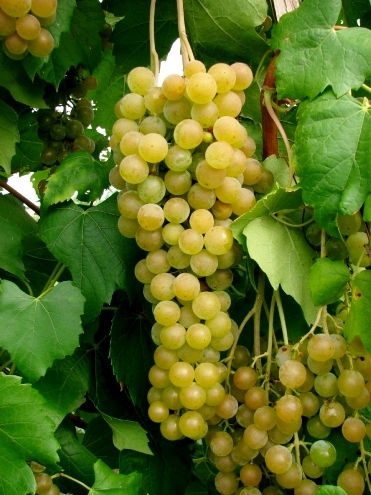Help name the newest grapes from the Cornell University Grape Breeding Program!
It’s hard to come up with new winegrape names-they have to be unique, distinctive, and descriptive, look good on a wine bottle, and meet a variety of complicated legal specifications that you don't even want to think about.
Even more important, you have to like the grape and its name- because we hope we’ll be seeing the varietal name on wine bottles in the near future!
So the Cornell University Grape Breeding Program is challenging YOU- the wine industry-to help us name our two newest wine grapes.
If you’d like to try your hand at naming grapes, take a look at the variety descriptions and photos for NY-76.0844.24 (white) and NY-95.0301.01 (red) below. Be as creative as you like, keeping in mind that names have to be unique-no reruns- and should be designed to sell varietal wine. Send as many creative names as you can think of to Bruce Reisch at bruce.reisch@cornell.edu by July 27, 2012, and they will be placed on "the list" for reveiw. Cornell University will do the all the legal footwork to check for trademark violations and such, compile a shortlist of possibilities, and release a name for each when they have been selected! If your grape name(s) is/are chosen, you will be acknowledged at the variety introduction and any publicity related events. (Sorry, no cash award- but just think of the lasting glory and fame!)
Thanks for your help, and we look forward to seeing your creative names!
Meet the Grapes
NY-95.0301.01 is a red wine selection, and will be the first introduction to originate from the “no-spray” portion of the Geneva breeding program. It’s highly resistant to both downy and powdery mildews, making it a good choice for sustainable or organic growers. The wine is dark red with little or no hybrid character, and exhibits moderate body, good structure, and blueberry on the palate.
NY-76.0844.24, a white wine selection, ranks very high for winter hardiness and productivity. The estimated temperature of 50% primary bud kill in mid-winter is –17 F, and cold damage to trunks is rare. Wine quality is excellent, showing aromatic characters that panelists compare to Gewürztraminer or a citrusy Muscat.

